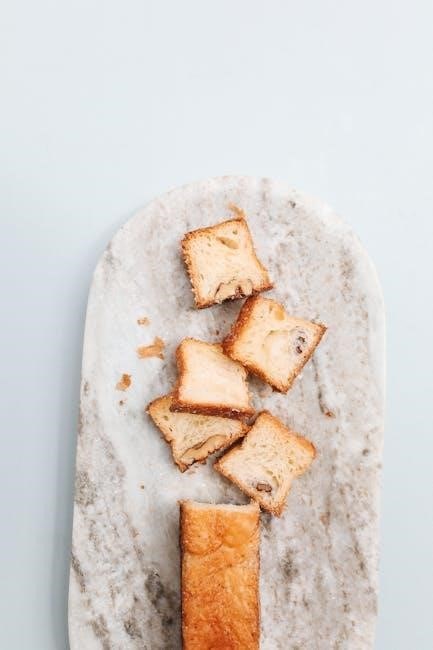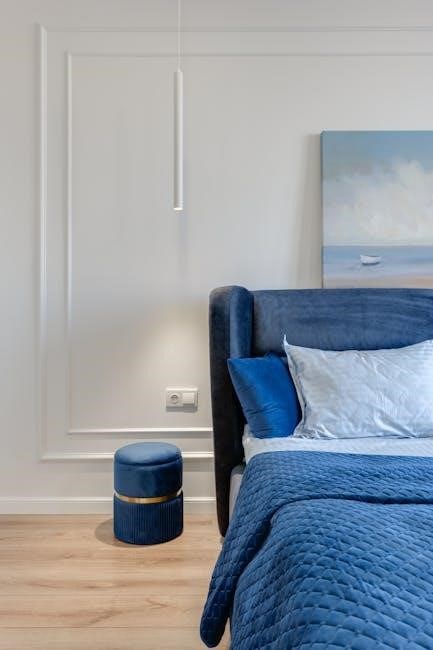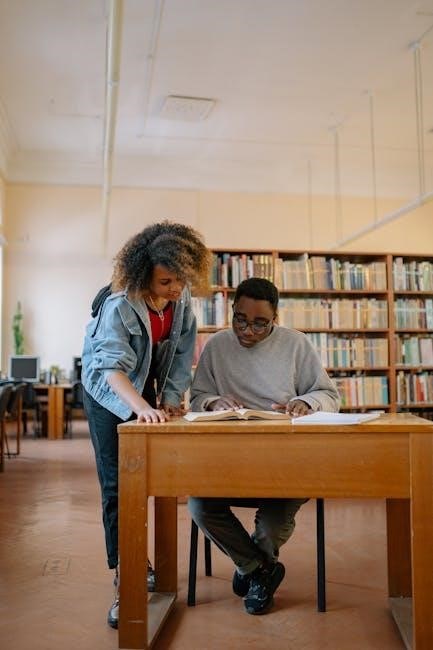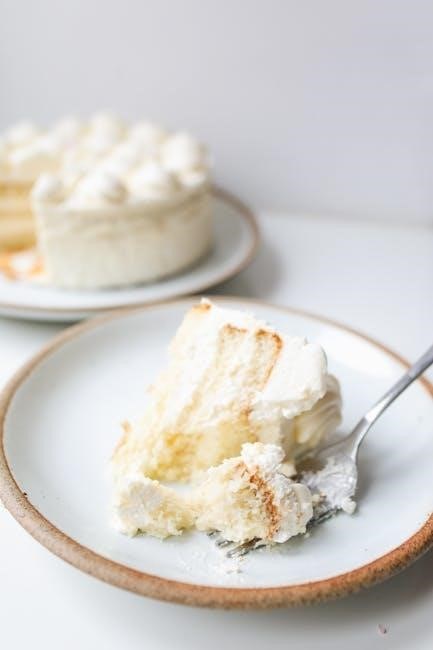Discover the crumb quilt‚ a creative way to repurpose fabric scraps into vibrant‚ unique designs. Perfect for all skill levels‚ it transforms leftover pieces into new fabric‚ emphasizing sustainability and resourcefulness in quilting.
What is a Crumb Quilt?
A crumb quilt is a creative quilting technique that transforms small fabric scraps into vibrant‚ one-of-a-kind designs. It involves piecing together tiny remnants of fabric‚ often called “crumbs‚” to create new fabric. This method is perfect for quilters who want to minimize waste and give new life to leftover materials. The process is flexible‚ allowing for improvisational designs and a wide range of styles‚ from chaotic to organized layouts. Crumb quilting is a celebration of resourcefulness and creativity‚ turning discarded fabric bits into stunning‚ functional works of art.
Why Use a Crumb Quilt Tutorial?
A crumb quilt tutorial is an excellent way to breathe new life into fabric scraps‚ offering a sustainable and creative approach to quilting. It’s ideal for quilters of all skill levels‚ helping to reduce fabric waste while fostering creativity. The step-by-step guidance makes it easy to transform small remnants into unique designs. Perfect for those wanting to try something new‚ crumb quilting tutorials provide practical tips and inspiration‚ ensuring a fun and rewarding sewing experience. They also offer a sense of accomplishment by turning scraps into something truly special and functional.

Materials Needed for a Crumb Quilt
Gather assorted fabric scraps‚ a rotary cutter‚ cutting mat‚ ruler‚ fabric pins‚ needle‚ thread‚ and optional batting. These tools help create a unique‚ eco-friendly quilt.
Fabric Scraps and Tools
Fabric scraps are the heart of a crumb quilt‚ transforming leftover pieces into something new. Essential tools include a rotary cutter‚ cutting mat‚ ruler‚ fabric pins‚ needle‚ and thread. These tools enable precise cutting and sewing‚ making the process efficient. Small fabric remnants‚ even irregular shapes‚ are perfect for creating crumb blocks. Basic sewing supplies like scissors and a sewing machine are also necessary. By organizing your scraps and using these tools‚ you can craft a unique‚ eco-friendly quilt that celebrates creativity and sustainability.
Additional Materials for Quilting
Beyond scraps‚ essential materials include batting fabric for insulation and flannel as an alternative backing. Interfacing adds stability‚ while neutral sashing fabric prevents blocks from blending. A sewing machine and basic notions like scissors‚ pins‚ and thread are crucial. Optional materials include a walking foot for smooth stitching and quilting gloves for control. Use these tools to enhance your crumb quilt’s structure and durability‚ ensuring a professional finish. Creative uses for leftover crumbs include pillowcases‚ tote bags‚ or zipper pouches‚ maximizing fabric utilization.
Sorting and Organizing Fabric Scraps
Organize fabric scraps by size‚ color‚ or pattern to streamline your crumb quilting process. Separate neutrals for sashing and sort scraps by type‚ ensuring efficient use of materials.
Tips for Categorizing Fabric Scraps
Sort fabric scraps by color‚ size‚ or pattern to simplify your crumb quilting workflow. Separate neutrals for sashing and group similar fabrics together. Store small scraps in labeled bins. Consider organizing by theme or project. This system ensures efficiency and creativity when piecing together crumb blocks.
Constructing the Crumb Quilt Block
Begin with small fabric scraps‚ sewing them together to form a block. Add strips and pieces incrementally‚ pressing seams as you go for a cohesive‚ improvisational design.
Step-by-Step Guide to Building a Crumb Block
Start by sorting small fabric scraps into a variety of colors and textures. Sew two pieces together‚ then add more strips around them‚ pressing seams as you go. Continue building the block by attaching additional scraps‚ ensuring a random‚ improvisational design. Use a ruler to trim edges for consistency. Once the block reaches the desired size‚ layer it with batting and backing for quilting. This method minimizes waste and creates unique‚ intricate patterns‚ perfect for beginners or experienced quilters alike.
Using a Quilting Sandwich
A quilting sandwich consists of a crumb block‚ batting‚ and backing. Layer them‚ pin‚ and quilt. Optional batting adds loft; flannel offers a lighter feel.
How to Prepare Your Quilting Layers
To prepare your quilting layers‚ start by laying out your crumb block as the top layer. Add a piece of batting or flannel in the middle for loft and stability. Finally‚ place your backing fabric‚ ensuring it’s slightly larger than the crumb block. Smooth out all layers to remove wrinkles and align edges properly. Use fabric pins or a spray adhesive to secure the layers together. This setup creates a stable surface for quilting‚ allowing you to sew through all layers evenly. Optional batting adds extra warmth and texture‚ while flannel provides a softer‚ lighter feel.
Adding Neutral Sashing
Neutral sashing enhances crumb quilts by separating vibrant blocks‚ preventing them from blending together. It adds a clean‚ cohesive look and ties the design together without overpowering the crumbs.
Importance of Sashing in Crumb Quilts
Sashing is a crucial design element in crumb quilts‚ serving as a neutral separator between vibrant blocks. It prevents colors and patterns from clashing‚ allowing each crumb block to stand out. By adding visual balance and cohesion‚ sashing enhances the overall aesthetic. It also provides a clean framework‚ making the quilt appear more structured and polished. Neutral tones like white‚ gray‚ or beige are often used to ensure the focus remains on the crumb blocks‚ creating a harmonious and professional finish.

Projects Beyond a Full Quilt
Explore creative uses for crumb blocks beyond full quilts. They’re perfect for making pillowcases‚ tote bags‚ and zipper pouches. These small projects breathe new life into fabric scraps and add unique touches to your home or gifts.
Creative Uses for Crumb Blocks
Crumb blocks are incredibly versatile! Use them to create charming pillowcases‚ durable tote bags‚ or stylish zipper pouches. They also make excellent hot pads or coasters. For larger projects‚ combine multiple blocks to craft a unique quilted wall hanging or table runner. You can even incorporate crumb blocks into garment accents‚ like patchwork pockets or collars. These small‚ scrap-based designs are perfect for minimizing fabric waste while creating personalized‚ one-of-a-kind items. They’re ideal for quilters of all skill levels looking to add a creative touch to their sewing projects.

Tips for Success
Sort fabric scraps by color and size for a cohesive look. Use a rotary cutter for precise cuts. Press seams regularly for a professional finish.
Common Mistakes to Avoid
Avoid mismatched block sizes by ensuring consistent measurements. Don’t overlook pressing seams‚ as it affects the quilt’s finish. Using too many dark or light fabrics can make the quilt look unbalanced. Not sorting scraps by color or size may result in a chaotic design. Forgetting to add sashing can cause blocks to blend together. Overcomplicating the design with too many patterns may distract from the crumb quilt’s charm. Keep it simple and organized for the best results.

Additional Resources
Explore YouTube tutorials like Teresa DownUnder’s for step-by-step guidance. Join quilting communities and forums for tips and inspiration. Visit websites like Purl Soho for patterns and ideas.
Recommended Tutorials and Communities
For in-depth guidance‚ explore Teresa DownUnder’s YouTube tutorial‚ which offers a detailed crumb quilting technique. Online communities like quilting forums and social media groups provide inspiration and support. Check out Purl Soho for modern patterns and creative ideas. Join Sew Alongs for collaborative projects and tips from experienced quilters. These resources will help you master crumb quilting and connect with like-minded crafters. Share your projects and learn from others to grow your skills and enjoy the process.
